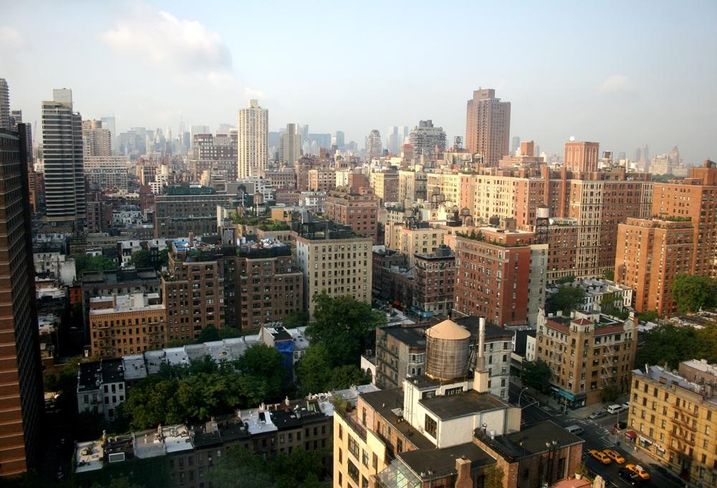Everything You Need to Know About The Upper East Side’s Multifamily Dominance
The Upper East Side has come a long way from being the “Silk Stocking District,” now standing as one of the most affluent neighborhoods in all of NYC. Located between Central Park, 59th Street, the East River and 96th Street, UES not only features impressive, historic multifamily properties, but has continued to dominate as a multifamily hotspot for decades.
Despite missing many of the modern amenities we see as required—such as elevators—UES’s vintage structures continue to draw millions in deals and potential tenants every year. But why? To get some insight into UES’s long-standing fortunes, we spoke with Besen & Associates investment sales brokers Shallini Mehra, Dan Shapiro and Chief Marketing Officer Ron Cohen.
The UES Appeal

Shallini is quick to remind us that UES's massive multifamily market isn’t exactly a new trend, pointing out the neighborhood has been, and remains, a “tried and true” submarket that will always be of interest to multifamily investors, due to its abundance of “vintage” building stock, desirable location, low vacancies, continued rent growth and neighborhood feel.
“UES has retained a certain aspect of character with tree-lined streets and mom-and-pop retail along Second and First avenues that creates a lot of ease and convenience for local residents,” she tells Bisnow. “And with access to Central Park for young families, it’s a neighborhood whose appeal never goes out of fashion.”
Shallini, along with colleagues Amit Doshi and Ishan Chhabra, is working on the sale of two contiguous mixed-use buildings at 1762-1764 First Ave (right).
“For a multifamily investor, this deal checks off a lot of boxes,” she said. “Desirable UES avenue location, diverse income streams from both residential and commercial tenants, mostly free market rents, and growth potential. All of this is important because we’re finding there’s a shift in demand towards more free market tenancy in light of an increasingly challenging regulatory environment vis-à-vis rent stabilization.”
In addition, not only is the UES host to some of the world’s most famous museums—such as the Guggenheim (top left) and the Frick Collection (bottom left)—but it’s also home to top-tier hospitals, shopping and public and private schools, attracting families who plant their roots and stay long term. There are also connections to the 4 subway line and 16 MTA bus routes. And with the addition of the Second Avenue subway, Shallini says UES will gain “a significant transportation bonus, which will further attract residents to the UES for the long term.”
It also helps that the rents on the Upper East are more affordable than other "hot" neighborhoods including the West Village, Flatiron and Chelsea.
Vintage, Not Old

UES’s timeworn multifamily properties—some of which date back to the turn of the century—are more of a concern for investors, Dan says. He admits that older buildings do present a pricing issue when you consider the cost of potential improvements.
Capital expenditures and building condition have to be considered in the value equation as buyers determine what to offer. But in light of “artificially lower rents due to stabilization,” he says, there’s usually a value-add component to these properties that investors are seeking.
“The growth potential, to a large extent, drives the cap rate and the gross rent multiplier proportionately,” Dan says. “Manhattan cap rates have been averaging in the mid-3% range, which translates to negative returns in the near term, so experienced operators buying multifamily anywhere in Manhattan these days don’t expect cash flow and/or immediate returns.”
That being said, the longer-term growth potential is exponentially greater than anywhere else in the country, so many consider these older properties to be worth forgoing immediate cash flow. Dan is presently exclusive agent to sell the property at 409-413 East 84th St, two six-story walkup buildings (with 75 feet of frontage on one lot) with 48 apartments totaling 31k SF.
“With average in-place rents at $1,600 ($31/SF), there is potential to practically double the rent roll and thus add tremendous value here,” Dan (pictured in front of the property) said.
A Tale of Two UES

The most interesting phenomenon about UES’s multifamily market, in Ron’s opinion, is what he refers to as the “dividing line” of Lexington Avenue.
“The UES has long been a ‘tale of two cities,’ in that values west of Lexington can go exponentially higher versus east of it,” he tells Bisnow.
West of Lex features not only a smaller inventory of multifamily rental buildings, but also storied buildings like 740 Park Ave, co-ops catering to the richest of the rich and new developments such as 520 Park Ave that are selling out at prices that Ron could only describee as “stratospheric.” And with such limited inventory, building owners in the vicinity tend to hold onto their assets longer because they’re so valuable.
“Along the Gold Coast of Madison Avenue,” he says, “a 6,700 SF, 20-foot-wide building at 820 Madison Ave sold for $47M in 2015, which equated to $7k/SF. That same building on Third or Second Avenue would probably trade for $800 to $1k/SF.”
The east, however, has been a “go-to market” for post-college renters, many of whom, Ron says, would’ve liked to have set up shop in Brooklyn before being priced out there. With UES rental buildings now presenting a “value play,” these tenants often remain there until they have families.
With the completion of the Second Avenue subway imminent, the Besen team (pictured above) believes values in the eastern portion of the UES will continue to grow. In addition, there are close to 900 condo units being developed across 19 projects in the submarket and, of those, 12 are located east of Lexington Avenue.
With new luxury condo inventory in the pipeline, Ron says, the need for rental housing will remain strong, and multifamily will continue to be the dominant asset class in UES.
“Simply put,” he says, “owning rental properties on the UES will always be considered a solid bet.”
To learn more about our Bisnow partner, click here.


